 The Plaguelands
The Plaguelands - This talent changes your poison puddle from murloc-sized to dehaka-sized. In fights, this gives the Q better AOE damage and zone denial. While this talent doesn't add too much burst damage, it does give a lot of sustained damage. With this Kel'Thuzad gets much better waveclear, merc power, objective damage and siege damage. I like the utility of it a lot, so I prefer this talent as the level 1 pick if I don't want either other talent.
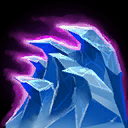 Blighted Frost
Blighted Frost - If you want to stop people from blinking out of your combo before the grand finale, you pick this talent. By default,
 Frost Nova
Frost Nova has a 1 second root, but
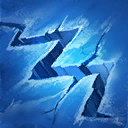 Shadow Fissure
Shadow Fissure has a 1.5 second delay. This means everyone with a blink, and many others with mobility skills can dodge the Fissure even if Nova lands. If 2 people on the enemy team have such skills, you may want this to ensure their demise. Extra damage on a center hit with
 Frost Nova
Frost Nova sure is appreciated, but all lvl 1 talents deal extra damage one way or another; it's not what you pick this talent for.
 Barbed Chains
Barbed Chains - Gives the most combo damage out of all the level 1 talents. If you land chains, you're probably going to follow up with a combo, so this talent makes both deal more damage. Your teammates get to benefit from this too. If you wanna deal with tanks by trying to burst them, this talent helps you nuke hardest out of all the level 1 talents. For squishies this is not needed to kill them unless they are healed and you have no backup from your team. Pick this talent when you want to combo multiple beefy people like tanks and bruisers.
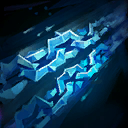 Strip Shields
Strip Shields - Makes
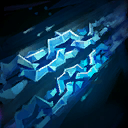 Chains of Kel'Thuzad
Chains of Kel'Thuzad deal bonus damage to shields. You should pick this talent if there is heavy shielding on the enemy team, like 2 of
 Tassadar
Tassadar,
 Zarya
Zarya or
 Artanis
Artanis. Note that most shielding abilities will likely be cast AFTER you cast
 Chains of Kel'Thuzad
Chains of Kel'Thuzad, to save whoever is about to get comboed. In such a case
 Strip Shields
Strip Shields gives no benefit. The shields you get from hitting with chains is nice, but they're not substantial enough to warrant picking this talent if the enemy team has no shields.
FYI: the damage from
 Strip Shields
Strip Shields is not amplified by
 Barbed Chains
Barbed Chains' 125% increased
 Chains of Kel'Thuzad
Chains of Kel'Thuzad damage.
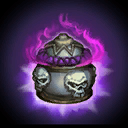 Phylactery of Kel'Thuzad
Phylactery of Kel'Thuzad - After gathering 12 regen globes, you heal 10% of all spell damage you deal. This allows you to heal up easily, especially outside of teamfights. Just drop a
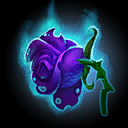 Death and Decay
Death and Decay on a minion wave to heal half of your hp. However, the healing usually doesn't help much when there is someone in your face killing you.
In addition, you can reset the quest to respawn instantly if you're dead.
Likely you will only be able to respawn once or twice per game using this talent; that being said, respawning after a big teamfight can secure or save the game late in the game. Therefore I choose
 Phylactery of Kel'Thuzad
Phylactery of Kel'Thuzad when there is no big argument for either other talent on this tier.
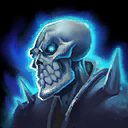 Armor of the Archlich
Armor of the Archlich - You get 50 physical armor at the push of a button. Great when an
 Illidan
Illidan or
 Tracer
Tracer is in your face. Take this when the enemy has a lot of physical damage, especially on divey heroes like
 Tracer
Tracer. The 50% damage reduction is usually the difference between dieing and forcing them to back off from your team after trying to kill you. When you activate
 Armor of the Archlich
Armor of the Archlich, you also slow and deal some damage around you. This is not really worth activating it for, but the slow will prevent someone who was just trying to kill you from running away after noticing you got 50 armor and are not going to die. Usually just one melee autoattacker is all it takes to make me pick this talent, it is just that good.
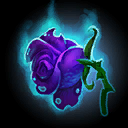 Accelerated Decay
Accelerated Decay - Makes
 Death and Decay
Death and Decay deal more damage the longer enemies stay in it. Sounds good on paper, but the extra damage is not quite amazing enough to compare to the amazing utility
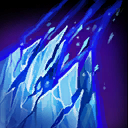 Glacial Spike
Glacial Spike or
 Chilling Touch
Chilling Touch brings. Both
 Glacial Spike
Glacial Spike and
 Chilling Touch
Chilling Touch make it easier to combo someone, but
 Accelerated Decay
Accelerated Decay doesn't bring that to the table. Therefore I can't recommend picking it unless your team is loaded with CC and you're running a
 Death and Decay
Death and Decay build.
 Glacial Spike
Glacial Spike - Spawns some terrain that you can attach your
 Chains of Kel'Thuzad
Chains of Kel'Thuzad to. Sounds gimmicky, but this is actually amazing for Kel'Thuzad. Kel'Thuzad's weakness is that in a 1v1 situation, you can't stun with
 Chains of Kel'Thuzad
Chains of Kel'Thuzad, and therefore can't hit the rest of his kit. However, if you have
 Glacial Spike
Glacial Spike, you have a way to stun with
 Chains of Kel'Thuzad
Chains of Kel'Thuzad in a 1v1 situation. A quick sidenote is that
 Glacial Spike
Glacial Spike deals damage when it expires and explodes, but this damage is so poor that it is generally not worth accounting for.
You can go about chaining someone to
 Glacial Spike
Glacial Spike in two ways: Either you use
 Chains of Kel'Thuzad
Chains of Kel'Thuzad on
 Glacial Spike
Glacial Spike first and then try to hit a hero. The alternative is that you first aim at a hero with
 Chains of Kel'Thuzad
Chains of Kel'Thuzad, and then aim for
 Glacial Spike
Glacial Spike.
If you hit
 Glacial Spike
Glacial Spike first, then you can hit someone with
 Chains of Kel'Thuzad
Chains of Kel'Thuzad at twice its range by casting
 Glacial Spike
Glacial Spike between you and your target. Doing so also pulls the target towards you and your team, allowing your team to focus him. However, because
 Glacial Spike
Glacial Spike takes a second to spawn, enemies will usually run out of range before it spawns and you can use
 Chains of Kel'Thuzad
Chains of Kel'Thuzad on it. This makes it harder to catch people out of position a la
 Hook
Hook; However, in teamfights you can use this range extension trick to stay safer while you try and pick someone off.
The other option of hitting the hero with
 Chains of Kel'Thuzad
Chains of Kel'Thuzad first is generally more helpful up close. In this case you don't need the extra range. If you get dived for example you can cast
 Chains of Kel'Thuzad
Chains of Kel'Thuzad on whoever's diving you and spawn
 Glacial Spike
Glacial Spike right next to him, and chain him to it as it spawns. Without extra movement abilities he can't run far enough from the
 Glacial Spike
Glacial Spike to avoid getting chained to it. An advantage of casting
 Glacial Spike
Glacial Spike only after you hit
 Chains of Kel'Thuzad
Chains of Kel'Thuzad is that you avoid it going on a 30-second cooldown should you miss.
Another use of
 Glacial Spike
Glacial Spike is blocking enemies' movement.
 Glacial Spike
Glacial Spike is blocking terrain, and can block enemies running through a chokepoint for 4 seconds. It can block chokepoints surprisingly wide, because heroes often cannot squeeze between the gap left between
 Glacial Spike
Glacial Spike and other terrain. You can block enemies' escape or help yourself escape. To help yourself escape, cast it just in front of you, so it spawns just after you run over. However, unlike
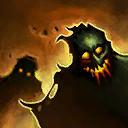 Zombie Wall
Zombie Wall, you can't get rid of
 Glacial Spike
Glacial Spike early. Therefore be careful to not screw over any allies you wanted to help, they probably won't be able to take it lightly.
 Chilling Touch
Chilling Touch - Makes your autoattack deal splash damage and slow every 8 seconds. Note that this autoattack deals spell damage and therefore benefits from your
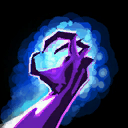 Master of the Cold Dark
Master of the Cold Dark spell damage boost. The slow may help you land a
 Frost Nova
Frost Nova, followed by the rest of your stuff; however I personally find it easier to land a combo with
 Glacial Spike
Glacial Spike. Unlike
 Glacial Spike
Glacial Spike,
 Chilling Touch
Chilling Touch does increase your damage somewhat, which is nice.
 Chilling Touch
Chilling Touch can be a solid pick if you don't need the extra range that
 Glacial Spike
Glacial Spike brings, but I personally like
 Glacial Spike
Glacial Spike so much that I hardly ever pick
 Chilling Touch
Chilling Touch.
I have already discussed ultimates in the Abilities section. My preferred pick is
 Shadow Fissure
Shadow Fissure
 Icy Grasp
Icy Grasp - Extends
 Frost Nova
Frost Nova's slow from 2.5 seconds to 4.5 seconds. 4.5 seconds is a long time to be slowed, and will make it hard for anyone that got hit to get away or try to get revenge. This effect is only useful if enemies survive or you can't fully combo them, but that is also the case with
 Chain-Link
Chain-Link. One advantage of
 Icy Grasp
Icy Grasp is that it can also be useful if you chain a hero to a structure, whereas
 Chain-Link
Chain-Link won't trigger in such a case. Unless enemies are really not going to die when you combo them (in which case I pick
 Chain-Link
Chain-Link),
 Icy Grasp
Icy Grasp is my preferred pick for this tier.
 Chains of Ice
Chains of Ice - On paper a slow with such a short duration really doesn't sound useful. However, it helps a lot to land a
 Chains of Kel'Thuzad
Chains of Kel'Thuzad ->
 Frost Nova
Frost Nova combo by making it harder for enemies to run out of the
 Frost Nova
Frost Nova after getting chained. That being said, it is possible to cast
 Chains of Kel'Thuzad
Chains of Kel'Thuzad and
 Frost Nova
Frost Nova in such a way that dodging
 Frost Nova
Frost Nova after getting chained is impossible even without this talent (described in the "The Kel'Thuzad combo" section). This makes it kinda feel like a learning talent (or more negatively said: a crutch talent) for Kel'Thuzad. Despite this, I strongly recommend you to make use of this talent for three reasons:
First, Kel'Thuzad can be hard to play, and it is better to pick such a talent if you like it than get frustrated playing Kel'Thuzad and quit on him.
Second, the other two talents on this tier aren't the most crucial talents, and you can easily manage without them.
Third,
 Chains of Ice
Chains of Ice is only available from level 13. This means that if you want to do well with Kel'Thuzad, you will learn to play without
 Chains of Ice
Chains of Ice anyway. This makes it much easier to try out the other talents without being too attached to
 Chains of Ice
Chains of Ice.
 Chain-Link
Chain-Link - Lower
 Chains of Kel'Thuzad
Chains of Kel'Thuzad's cooldown by 4 seconds when you chain two heroes together. Note that
 Chain-Link
Chain-Link does not lower cooldown if you chain someone to a structure or
 Glacial Spike
Glacial Spike. If you have played with Kel'Thuzad, you will generally think that if Kel'Thuzad manages to pull off a 2-man combo, they usually both die and he already won the teamfight for his team. Therefore
 Chain-Link
Chain-Link would be more of a win-more talent. This is generally true, unless the enemy team has heroes that are really good at nullifying a Kel'Thuzad combo, like
 Uther
Uther with
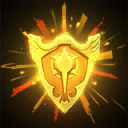 Divine Shield
Divine Shield and
 Cleanse
Cleanse. If you are having trouble swaying a fight in your favour despite being able to setup a 2-man combo, then you may wanna pick
 Chain-Link
Chain-Link to be able to try again sooner.
 Arcane Echoes
Arcane Echoes - Reduces
 Death and Decay
Death and Decay cooldown by 1.25 seconds for each hero you hit with its explosion. Since
 Death and Decay
Death and Decay's radius is not very large, you will likely only hit one hero. You also get no cooldown reduction from landing
 Death and Decay
Death and Decay coming from
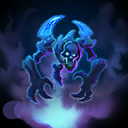 The Damned Return
The Damned Return. However,
 The Plaguelands
The Plaguelands does help you score hits on more heroes with the size increase. Don't expect to take large chunks out of
 Death and Decay
Death and Decay's cooldown. I only feel like
 Arcane Echoes
Arcane Echoes is useful for a dedicated
 Death and Decay
Death and Decay build (and I don't want to recommend such a build in serious games). Theoretically in such a build you can use the cooldown reduction from
 Arcane Echoes
Arcane Echoes to be able to reapply
 Accelerated Decay
Accelerated Decay before it wears off. However, a better way to increase
 Death and Decay
Death and Decay's lingering damage is to use
 Hungering Cold
Hungering Cold.
 Hungering Cold
Hungering Cold - Makes enemies hit by the center of
 Frost Nova
Frost Nova take bonus damage every time they get damaged again by Kel'Thuzad. This bonus damage is about equal to
 Death and Decay
Death and Decay's lingering damage. Since
 Death and Decay
Death and Decay has a lot of damage ticks, the damage from
 Hungering Cold
Hungering Cold really adds up to an amount comparable to casting another ability. Therefore
 Hungering Cold
Hungering Cold is a standard pick in my build.
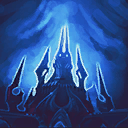 Power of Icecrown
Power of Icecrown - Gives you up to 30% additional spell power depending on how many times you CC enemies.
 Power of Icecrown
Power of Icecrown is easy to stack as Kel'Thuzad, because he has a lot of CC with
 Frost Nova
Frost Nova,
 Chains of Kel'Thuzad
Chains of Kel'Thuzad and optionally
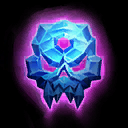 Frost Blast
Frost Blast. Note that the talents
 Armor of the Archlich
Armor of the Archlich,
 Chilling Touch
Chilling Touch,
 Chains of Ice
Chains of Ice also slow enemies and can thus give you additional stacks. For example, landing a 2-man
 Chains of Kel'Thuzad
Chains of Kel'Thuzad when you have
 Chains of Ice
Chains of Ice gives you 4 stacks of
 Power of Icecrown
Power of Icecrown instantly. That being said, your
 Master of the Cold Dark
Master of the Cold Dark quest also gives you 75% spell power. Because of how spell power stacks, you only get (100% + 75% + 30%) / (100% + 75%) = 117% of your normal damage at max stacks. A 17% damage increase isn't as much as
 Hungering Cold
Hungering Cold gives. However, using
 Power of Icecrown
Power of Icecrown is easier, as it doesn't rely on landing a
 Frost Nova
Frost Nova ->
 Death and Decay
Death and Decay combo. If you like to melt face with Kel'Thuzad's comboes, you probably want
 Hungering Cold
Hungering Cold. If you also want to increase the rest of Kel'Thuzad's damage, you may want
 Power of Icecrown
Power of Icecrown.
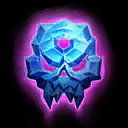 Deathchill
Deathchill - Makes
 Frost Blast
Frost Blast slow after the root for 3 seconds. In addition, if a hero hit dies before either the root or the slow afterwards expires, he explodes again with a chance to hit teammates. I honestly don't pick
 Frost Blast
Frost Blast much, and therefore
 Deathchill
Deathchill even less. Therefore I really don't have much experience with
 Deathchill
Deathchill.
4.5 seconds is a good-sized window for someone to die to be able to trigger secondary explosions. However,
 Deathchill
Deathchill doesn't give more damage to help killing someone in the first place, and
 Frost Blast
Frost Blast already has lower damage than
 Shadow Fissure
Shadow Fissure. I can only imagine
 Deathchill
Deathchill to be hilarious versus
 The Lost Vikings
The Lost Vikings or
 Murky
Murky, except they both have ways to dodge
 Frost Blast
Frost Blast. Also, before you start getting very excited, Clones or
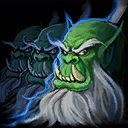 Mirror Image
Mirror Images don't give you extra explosions.
I feel like
 Deathchill
Deathchill is mainly useful if your team has a way to keep enemies clustered with something like
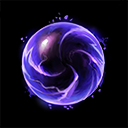 Grav-O-Bomb 3000
Grav-O-Bomb 3000 or
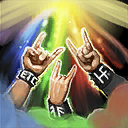 Mosh Pit
Mosh Pit.
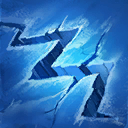 Might of the Scourge
Might of the Scourge - Instant reset when you hit someone with
 Shadow Fissure
Shadow Fissure. Sounds amazing, but you do have to realise that
 Might of the Scourge
Might of the Scourge almost never hits by itself. Therefore pick if your team has a lot of CC. Another reason to pick this is against
 Sgt. Hammer
Sgt. Hammer or someone with a long channeled ultimate. You can repeatedly cast
 Might of the Scourge
Might of the Scourge on them to force them to stop channeling and move. With allied CC, you may be able to pull off a
 Shadow Fissure
Shadow Fissure ->
 Frost Nova
Frost Nova ->
 Shadow Fissure
Shadow Fissure combo. I generally pick
 Might of the Scourge
Might of the Scourge when I have no big reason to pick either
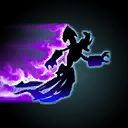 Shifting Malice
Shifting Malice or
 The Damned Return
The Damned Return.
 Shifting Malice
Shifting Malice - Okay, I lied when I said that Kel'Thuzad doesn't have any mobility, this one lvl 20 talent is the only mobility tool he has. However, I hope you still agree with me that doesn't have the mobility options to really chase or flee.
I pick this when I need to escape from people like
 Genji
Genji or am otherwise getting caught out of position a lot. In such cases,
 Shifting Malice
Shifting Malice is Kel'Thuzad's only tool to survive. It actually deals decent damage and resets on kill, so you may want to
 Shifting Malice
Shifting Malice into someone who is really low health. However, do note that
 Shifting Malice
Shifting Malice is not the fastest movement ability, so you may still get killed mid-dash.
 The Damned Return
The Damned Return - Spawns a shade that mimics your
 Death and Decay
Death and Decay casts. The shade's
 Death and Decay
Death and Decay benefits from all talents except for
 Arcane Echoes
Arcane Echoes. The shade's cooldown is equal to its duration, so you can have a 100% uptime.
Hitting someone with both
 Kel'Thuzad
Kel'Thuzad's and
 The Damned Return
The Damned Return's
 Death and Decay
Death and Decay deals high damage and is a great way to chunk squishies and tanks alike. If you use
 The Damned Return
The Damned Return during a combo, especially if you also have
 Hungering Cold
Hungering Cold, you truly deal stupendous amounts of damage.
You can poke at enemies or buildings safely by casting
 The Damned Return
The Damned Return at range, and then casting
 Death and Decay
Death and Decay from there. It doesn't dissapear when you get far away, so you can put it down, walk far away and poke. This is my preferred pick at lvl 20 if I don't need
 Shifting Malice
Shifting Malice and have
 The Plaguelands
The Plaguelands.
![]()









Quick Comment (1) View Comments
You need to log in before commenting.